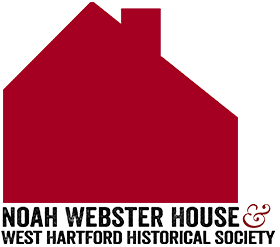Outreach Programs
READING ARTIFACTS
(Grades 1 – 4)
What can artifacts tell us about life in early America?
THEME: The West Division of Hartford in the 1700’s was a small farming community. Noah Webster’s father was also a weaver. People traded with friends, neighbors, merchants, and artisans for goods and services they needed. Using hands-one, inquiry-based learning, students will work in small groups to “read” different types of artifacts from the Noah Webster House Museum. What is it? How was it used? Do we use anything like it today? What does the artifact tell us about life in the 1700’s?
Cost: Please email education@noahwebsterhouse.org for current pricing.
Program Length: 1 hour per classroom
Max. No. of Students per Classroom: 25
EARLY AMERICAN GAMES AND TOYS
How did early Americans spend their free time?
(Grades 1 -4)
THEME: Like many early Americans, Noah Webster lived on a farm. A lot of hard work had to be done on a farm, and children had to help out as much as they could. Many times, children turned their work into games to make it more fun and make the time go by faster. When children had time to play, they played some of the same games we still play today. Many games helped children learn skills they would need when they grew up. Where did toys come from? How were they made? What skills do the toys and games teach? Using hands-on, inquiry-based learning, students will learn about the past by playing with toys and games.
Cost: Please email education@noahwebsterhouse.org for current pricing.
Program Length: 1 hour per classroom
Max. No of Students per Classroom: 25


